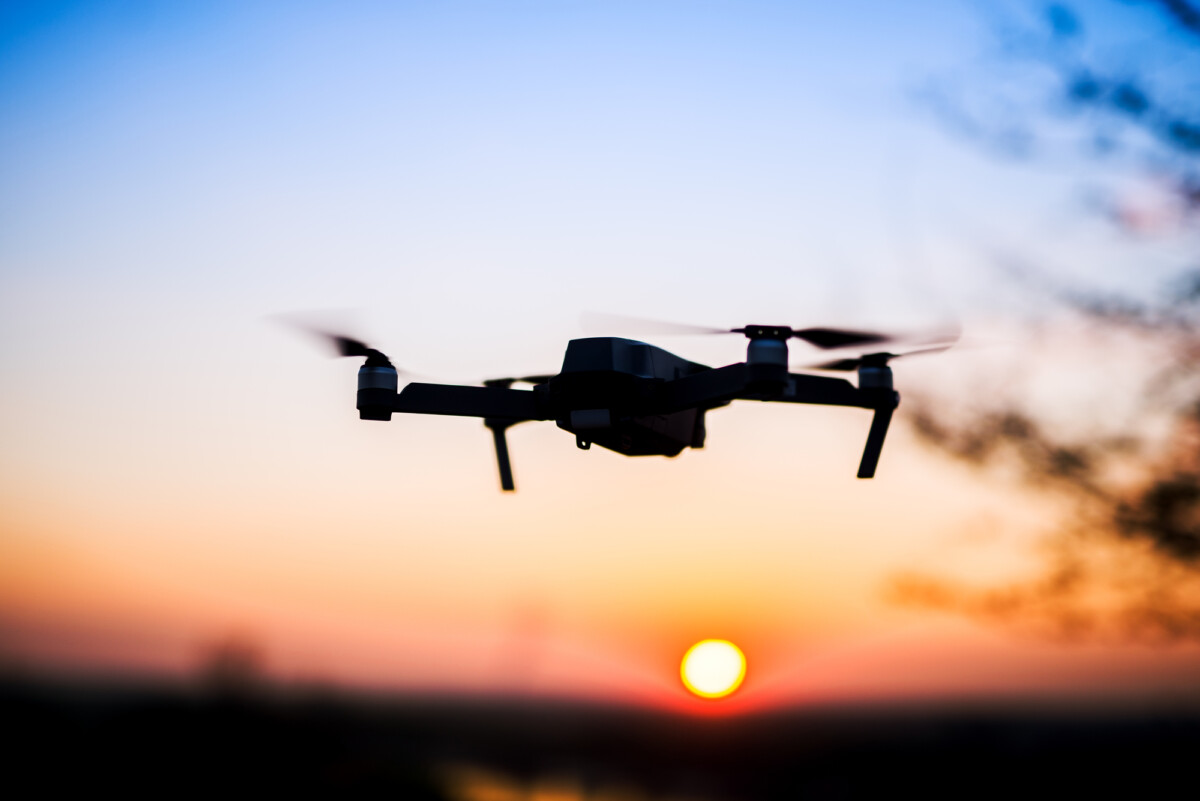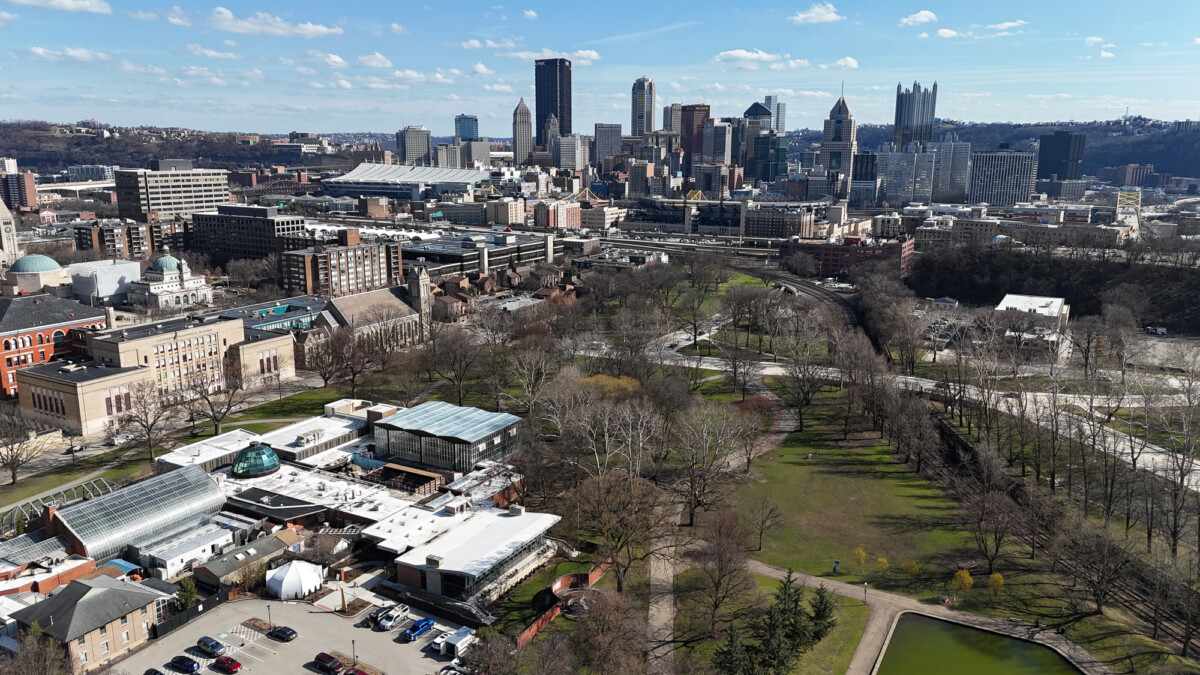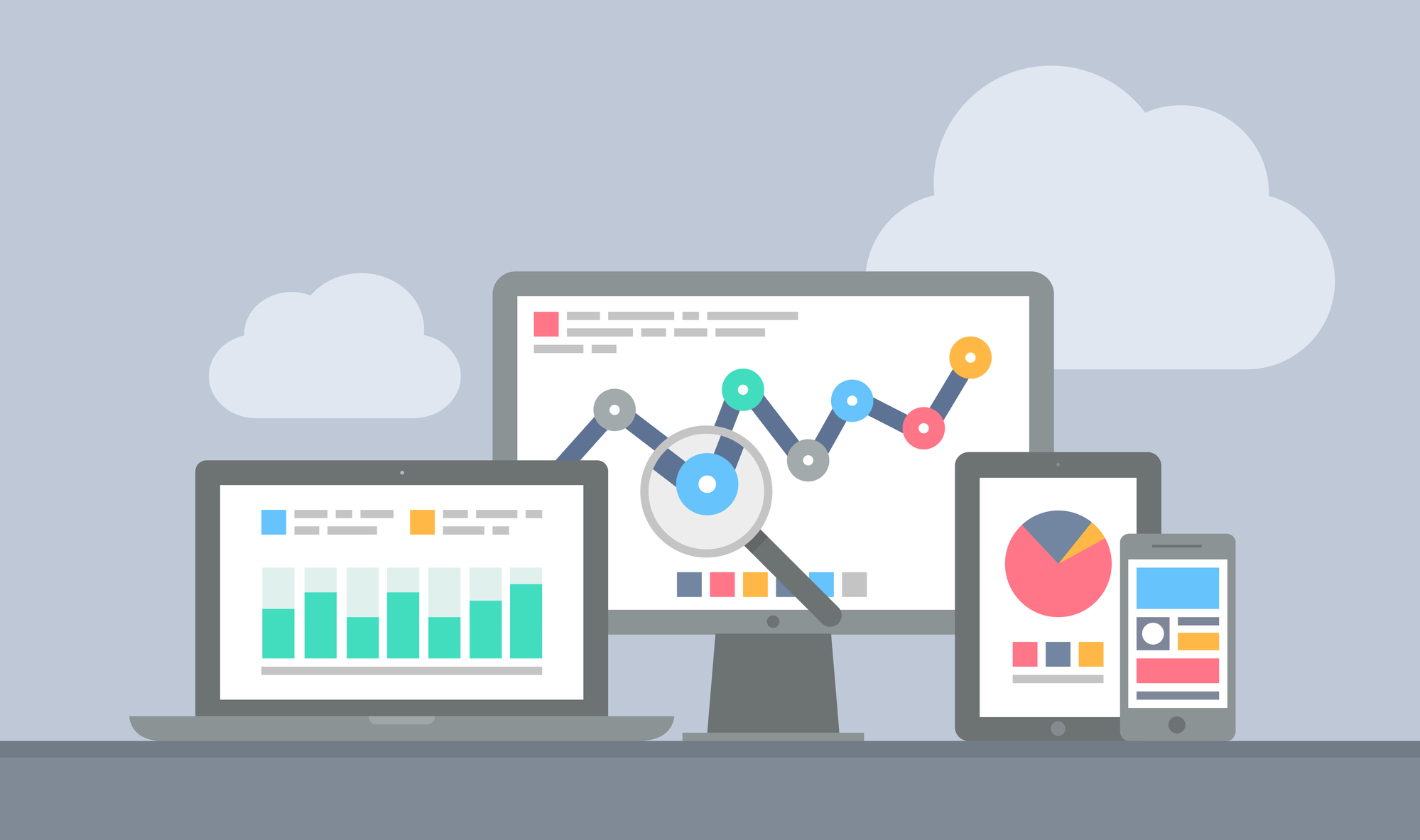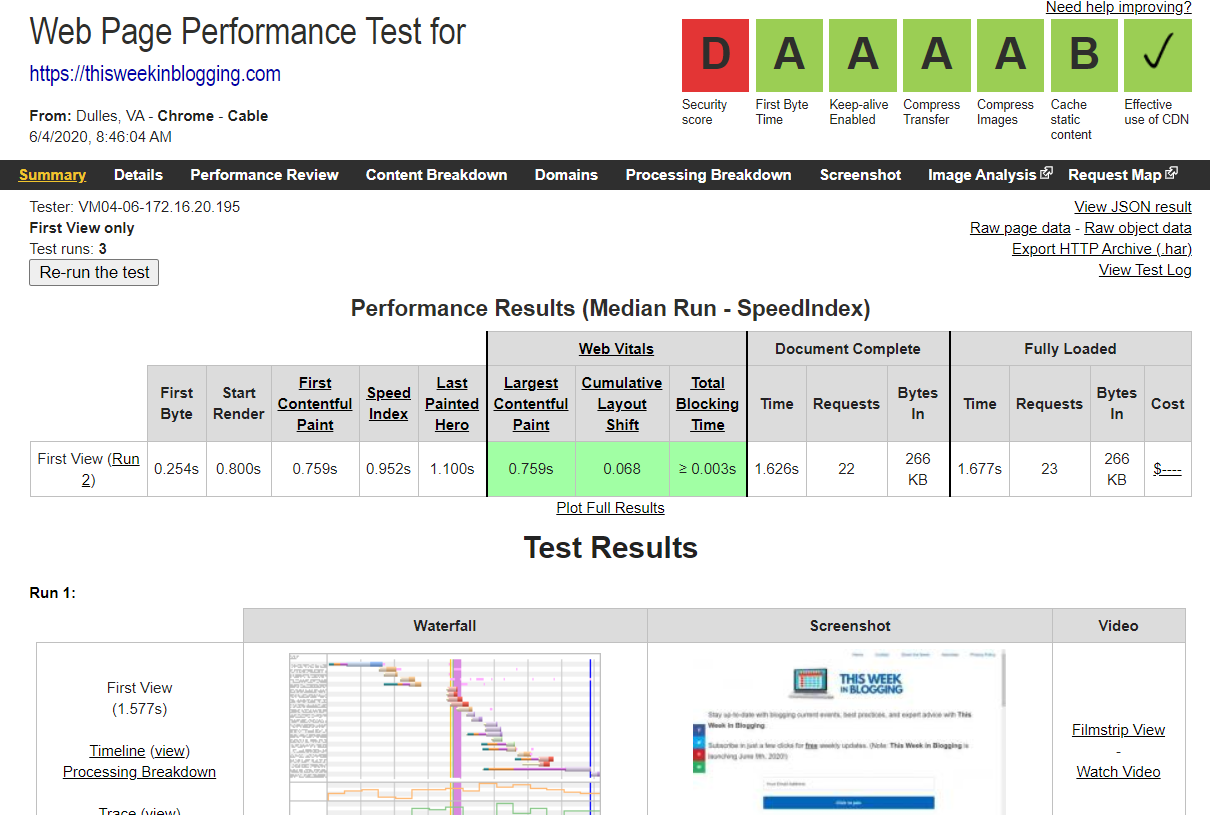Published by Jeremy. Last Updated on March 11, 2024.
Disclaimer: This Week in Blogging uses demographic data, email opt-ins, and affiliate links to operate this site. Please review our Terms and Conditions and Privacy Policy.
If you are considering picking up a drone for your blog to get some fantastic aerial photos and videos, you're in for a real treat. The technology makes for capturing stellar footage that could help set you apart online.
However, if you plan on using your drone for commercial purposes, particularly in the USA, you will need a license.
Thankfully, the FAA makes licensing for small unmanned aircraft use incredibly easy. All you have to do is study for the Part 107 drone exam, take a 60-question test at an authorized center near you, pass a background check, and off you go.
So in this one, I thought I'd break down the process I had to go through more when taking my Part 107 exam in early 2024- what was easy, what was a bit more confusing, and give some tools to help you be on your way to passing the exam and becoming a licensed drone pilot!
Note: Drone restrictions vary from country to country, state to state, county to county, and city to city. This article is intended only to focus on the licensing requirement with the FAA in the USA and does not touch on operational rules in your locality. We recommend researching all local restrictions in the areas you will likely fly the most before spending the money to buy a drone and become licensed.
Who Has to Take the FAA Part 107 Drone Exam?
While anyone over the age of 13 can, technically, fly a drone for a hobby, anyone who wishes to fly a drone for commercial purposes must be over the age of 16 and licensed by the FAA in the USA via the Part 107 drone certification. This is achieved by registering as a pilot with the FAA and taking an exam called “Unmanned Aircraft General – Small (UAG),” and taking additional recertification training every 24 months from there.
The term commercial is the important caveat here and is generally used as an umbrella catch-all for any scenario where you would be compensated for your work.
Are you getting hired to take drone videos for a client? That is commercial. Are you being paid for sponsored social media work that includes drone footage? That is commercial. Is the content appearing on a monetized channel where you're paid in exchange for views (such as display ads on your blog or earnings via a bonus campaign on social media)? That is commercial. Anywhere that drone content appears where you make money, be it directly or indirectly, is likely deemed commercial by the FAA.
Suffice it to say, this distinction covers virtually everyone attempting to operate their website or social media for any form of profit. So as long as you are over 16, you should study and pay for the exam to become a licensed drone pilot in the USA!
- Notes: The licensing test is not the same as registering a drone with the FAA. All drones over 0.55 lbs (250 grams) and under 55 lbs must be registered with the FAA, even if you are flying for a hobby (the fee is just a couple of dollars). Even though my drone, the DJI Mini 4, is under the minimum weight limit without lights (it would be over with lights!), I felt obligated to register as a commercial operator all the same. The license number must be affixed to the body of the drone after issue, too.
- Hobby drone operators are told to take the TRUST test and print out your certificates to have on hand when flying. But even those getting licensed commercially, I'd advise to take this exam anyway just to have. You need 100% to pass, but you can correct answers if any were identified as being incorrect. It is free and takes a couple minutes at most.
- Before signing up to take your Part 107 exam for commercial flights, you must register an FAA Tracking Number (FTN) on the IACRA portal. This is where your license application will be submitted later on after passing your exam. You can sign up for this at any time.
What All is Covered on the FAA Part 107 Exam?
When it comes down to it, the FAA wants all pilots, manned or unmanned, to have a broad understanding of how airspace rules and laws work. As a drone operator, you will likely very rarely be impacted by planes flying to your nearby airport, but the FAA wants you to know a great deal about them, and all the associated risks, for that 1% chance that you ever run into them. (Estimate my own.)
As such, you'll learn a lot of material that does not feel relevant when all we want to do with our drone is take it up in the air above our heads. Do you need to know about clearances to fly in restricted airspace? Absolutely. Do you need to know what the airspace restriction zone is at 18,000 feet when you'll never, ever fly there? I am not so sure- but you have to learn it all the same.
Several categories of information will be covered in the exam, including general regulations/laws, drone type classifications and restrictions (based on drone category type), airspace classifications and requirements, weather and its associated impact, emergency procedures, crew management, radio communications, performance changes during flight, drug and alcohol effects, reading weather reports like METAR, reading sectional charts, basic airport operations like flight paths, drone maintenance, and night time operations to name a few.
For studying, I simply watched a few YouTube courses like Tony Northrup's Part 107 guide, Altitude University's Part 107 study guide, Mr. Mig's Classroom Weather lessons, and UAV Coach's Tricky Sectional Chart Examples. I then balanced the rest of my time by taking practice questions and addressing knowledge issues as they came up by watching more focused videos (or sections of videos) again for items I was less confident about. All told, I probably spent about 10-15 hours studying.
The exam is conducted at an in-person testing center near you and typically is 60 questions with two hours allotted (I was finished in about 45 minutes). You're not allowed to take anything into the exam beyond scratch paper, a pencil, a basic calculator, and the reference book (featuring sectional charts, the key, and other diagrams that could be referenced in questions). I did not bring any of these with me, and they were all provided by the proctor at the start of my exam.
- My test facility was pretty hardcore about no outside items being brought in. They made me empty my pockets in front of a video camera, roll up my sleeves and pant legs, show that I had no earpieces in place, put all my belongings in a locked bag, and more. I was even told to leave my phone in my car; however, the proctors would have likely stored it for me otherwise. They really want you to bring nothing in to these exams other than what is provided for you. Overkill for a drone exam? Sure. But the testing centers administer many tests (many likely much more critical than a drone exam) so this was likely just a blanket policy for all.
Each question will then have three multiple-choice responses for you to choose from. The good news here is that one answer is almost always laughably bad that you can discount it almost immediately. So in most questions, you likely have a 50/50 chance of getting it right if you can discount one entirely- immensely helpful to get you to the 70% score to pass.
On a question requiring you to look up a sectional chart, for example, you may discount one answer if you recognize that an airport is Class B airspace, but an answer choice refers to Class D (or vice versa). On another, recognizing that an elevation is listed as above ground level (AGL) when it is only ever discussed as mean sea level (MSL). You will learn these when studying, but simple gotchas can be avoided simply by knowing some definitions and labeling terms inside and out.
Another bonus worth remembering is that many of the terms referenced are clearly identified in the sectional charts key at the start of the reference book. If you forget that Class B airspace is a solid blue line, Class C airspace is a solid magenta line, and that Class E could start at 700 feet or 1200 feet depending the scenario, don't worry- those are all illustrated in the key at the front of the book. I referenced the charts as a sanity check on about 15 questions to ensure I was correct- the key really helps!
- Questions I had trouble on included a couple about drone category restrictions (Category 2 drone rules, specifically), weather fronts (cloud/rain development), and load considerations (e.g. what happens when a weight is added on the aft side of an aircraft). These were are not covered as robustly in some YouTube videos shared above, so you may want to look into these a bit more in addition to common topics like laws, reading sectional charts (it seemed like half of my exam focused on these), and METAR reports. A quick review of these may help you get a few extra questions right.
What to Do After Passing Your Drone Exam?
After completing your drone exam, you're not yet ready to fly. You will get your printed exam results right after your test and must either mail them to the FAA or add your exam reference number to your application on the IACRA portal online. Once you do this, you can finally submit your application for licensing.
When you submit the application after passing your exam, this triggers the FAA-required background check, which has to be completed before your license can be issued. This could take 7 to 14 business days to complete, and a temporary, printable license will be issued online before one is mailed to you to have on hand. (My temporary license was available in about three business days, but a printed license could take much longer to arrive.)
During this time, you may want to do some things to prepare for being able to fly commercially:
- Take the TRUST test and print that certificate if you haven't yet. Although this one is more recommended for hobby flyers, do it anyway. Personally, I'd do this before taking your drone exam simply because some of the questions are the same as what you'll see in the Part 107 test.
- Register your drone with the FAA, print the certificate, and affix the registration number to your drone as recommended.
- This is required for all drones weighing 0.55 up to just under 55 lbs, but recommended for all those who fly commercially independent of drone size.
- Practice flying with your drone somewhere safe, like in a field. You can't post photos commercially til your temporary license is issued, but you can still fly as a hobbyist if you've taking the TRUST test. (As mentioned at the start of this article, be sure to confirm local laws before flying, too.)
- Download air monitoring apps like Air Aware and Air Control to look up airspace restrictions before flying.
- Buy a cheap notebook to log your flights and maintenance history.
- Carry your registration and permits with you at all times when you're flying.
- Don't forget insurance! While typically not mandatory, if you work with brands or businesses (or simply are operating on private property), you may be required to carry drone insurance with $500,000 to $1,000,000+ in liability protection. These can cost anywhere from a few dollars per hour for spot insurance or upwards of $750-$1,000 per year for annual coverage.
That's it!
Although it is not terribly difficult to become a licensed drone pilot in the USA as part of the FAA's Part 107 process, you do have to study, pass a certification test, and jump through a few registration hoops (with associated fees). That said, the effort is worth it to play by the rules when it comes to being a commercial drone operator.
For more information on how to become a drone pilot in the USA, click here. To shop for a drone, click here.
Join This Week in Blogging Today
Join This Week in Blogging to receive our newsletter with blogging news, expert tips and advice, product reviews, giveaways, and more. New editions each Tuesday!
Can't wait til Tuesday? Check out our Latest Edition here!
Upgrade Your Blog to Improve Performance
Check out more of our favorite blogging products and services we use to run our sites at the previous link!
How to Build a Better Blog
Looking for advice on how to improve your blog? We've got a number of articles around site optimization, SEO, and more that you may find valuable. Check out some of the following!













